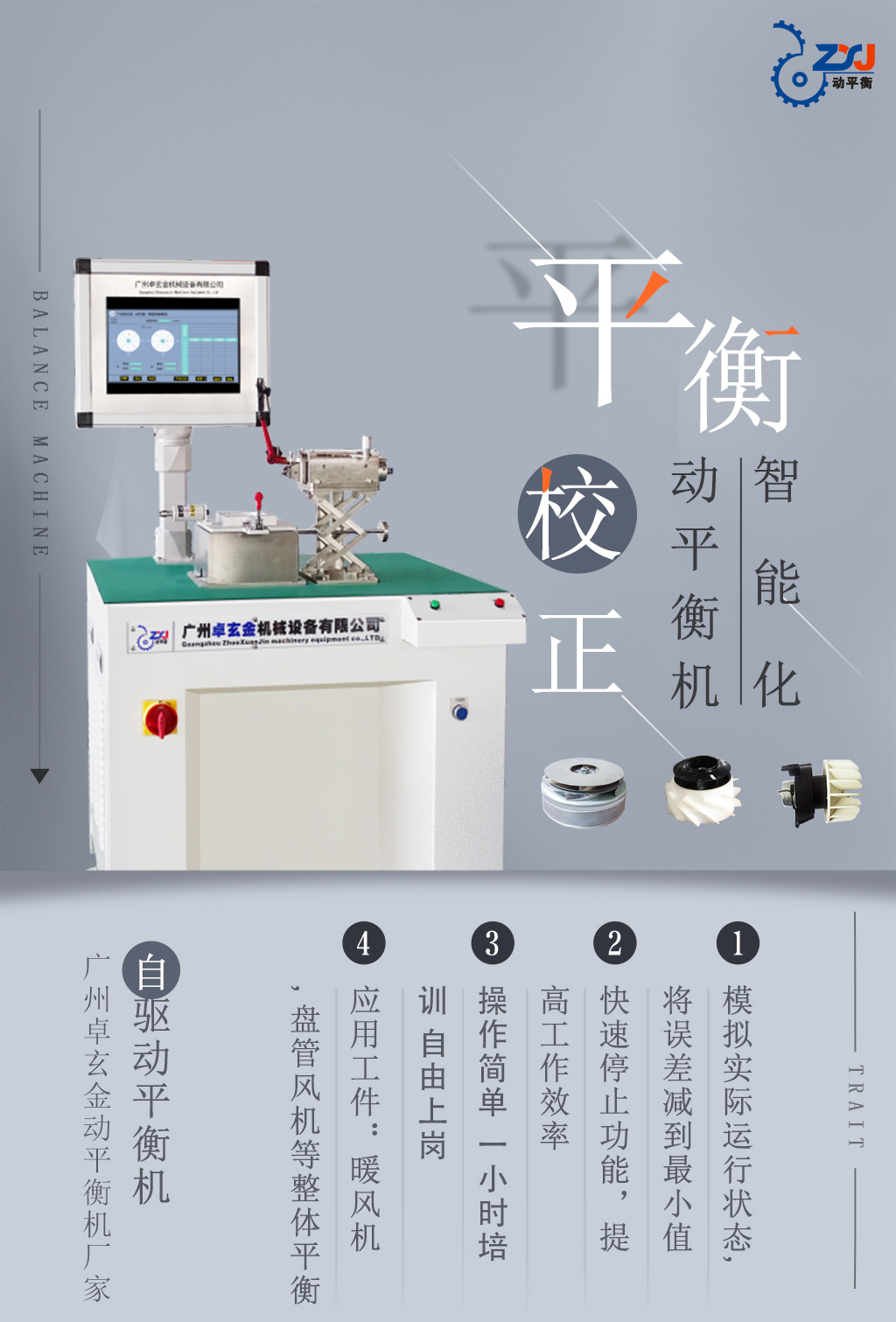Rotor dynamic balance correction process
Published:
2019-10-29 11:26
In today's production enterprises, the probability of unbalanced rotor failure is very high, accounting for more than 30% of the cause of rotating machinery failure. When the rotor is unbalanced, it will cause vibration of the whole machine and generate noise, accelerate the wear of the bearing, reduce the service life of the machine, and even cause the machine control to malfunction and cause serious accidents. In order to reduce the imbalance of the rotor, many production companies nowadays are equipped with dynamic balancing machines.

Balancing machine and its calibration conditions
Whether the rotor is static or dynamic, it should be balanced according to the weight, shape, speed, bearing condition and use of the rotor. General principle: When the rotor outer diameter D and length L satisfy D≥L≥5, static balance is only required regardless of the working speed of the rotor. When L≥D, the dynamic balance should be achieved when the working speed is greater than 1000 r/min.
First, the correction method
1. Weight reduction method: Part of the metal on the heavy side is removed by drilling, grinding, boring, milling and laser perforation.
2. Weighting method: thread connection, balance mud, riveting, welding, light side metal spraying, adding some metal.
3. Adjustment method: Change the corrected weight radius by screwing in or unscrewing the screw, or adjust the position of two or more weight blocks in the tank.
4. Thermal compensation method: The assembly state of the workpiece is adjusted by locally heating the rotor.
Second, the working principle of the dynamic balancing machine
The number and direction of the rotor imbalance are determined by measuring the vibration strength of the rotor support (the periodic mechanical vibration signal of the rotating body becomes the inductance signal, the separation solving circuit calculates the unbalance amount of the rotating body) and the phase (the relative origin needs to be determined). Since the weight can be weighted or reduced on two selected planes until equilibrium is reached. Therefore, by measuring the vibration of the two supports, you can know the balance of the two planes.
Rotor balancing consists of two steps: unbalance measurement (balancer) and calibration (via drilling, milling, spot welder and other ancillary equipment or manual methods).
Third, the accuracy level
Taking into account the advancement of technology and economic rationality, the International Organization for Standardization (ISO) established the world-recognized iso 1940 equilibrium requirement in 1940. The rotor balance requirements are divided into 11 levels, each step increasing by 2.5 times. From the highest requirement of g 0.4 to the minimum requirement of g 4000. The unit is g x mm/kg (gm/kg), which indicates the eccentric distance of the rotor shaft imbalance.
The balance requirements of the rotor should be determined before selecting the balancing machine.
Fourth, calculate the allowable imbalance
The formula for calculating the allowable imbalance is as follows:
Rotor dynamic balance machining process
In the formula, allow mper to measure inequality in g;
m represents the weight of the rotor in kg; g represents the balance of the rotor.
Accuracy grade, single
Bit is mm / s; r represents the corrected radius of the rotor, the unit is mm;
n represents the rotor speed in revolutions per minute. An example is as follows:
If the motor rotor balance accuracy requirement is g6.3, the rotor weight is 0.2 kg, the rotor speed is 1000 rpm, and the correction radius is 20 mm, the allowable inequality of the rotor is measured as:
Rotor dynamic balancing machine processing
Since the rotor of the motor is usually balanced on both sides, the allowable imbalance assigned to each side is 0.3.
Five, dynamic balance equipment (belt, double-sided weight loss or counterweight)
technical parameter:
1. Balance accuracy level (determined according to working conditions)
2, workpiece working speed
3, weight (or weight) position (re-drilling diameter and depth)
(In addition, you should also pay attention to dynamic balance and heat.)
The order of management is that the material after heat treatment is very hard and the processing difficulty is increased. )
Detection process:
1. Reasonable clamping according to the workpiece size.
2. Determine the origin of the sensor angle.
3. Determine the unbalanced data and direction based on the test results of the dynamic balancing machine.
(The direction cannot be reversed) will give a position. Combining the above reference data, the depth and number of holes are determined by calculation. The holes are concentrated as much as possible, and the effect of adding weight is obvious.
Through the above understanding, you should have more knowledge of the balancing machine. If you have other questions, you may wish to contact us Guangzhou Zhuoxuanjin Machinery Equipment Co., Ltd.
Related news
2018-12-03
In addition, if you need to buy a balance test machine, please contact us directly.
2018-12-03
Safety operation of the rotor of the motor to be balanced
电机转子装配工的一般操作规程如下: 1、工作前,整理场地,放稳各零、部件,并检查装配使用工具和工作环境是否安全良好。 2、吊放电机机座、底板、定子、转子、轴承等大型部件时必须放好方箱或垫木...
2018-12-03
Rubber roller dynamic balancing machine customer site
Mainly used in the balance correction of high-speed rotating workpieces in various household appliances
2018-12-03
Mainly used in micro-motor rotors, such as automotive motors, household electrical appliances, micro-motors
2018-12-03
[Guangzhou Zhuo Xuanjin] balance machine application range
Dynamic balancing machines are widely used and can be divided into ten categories
2018-12-03
Guangzhou Zhuo Xuanjin various balance machines and their application range
Mainly used in the balance correction of high-speed rotating workpieces in various household appliances, cooling fans, motors, generators, pumps, automobiles, printing, rollers and other industries.

